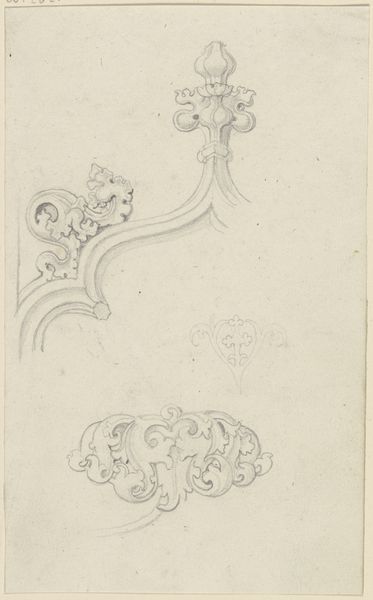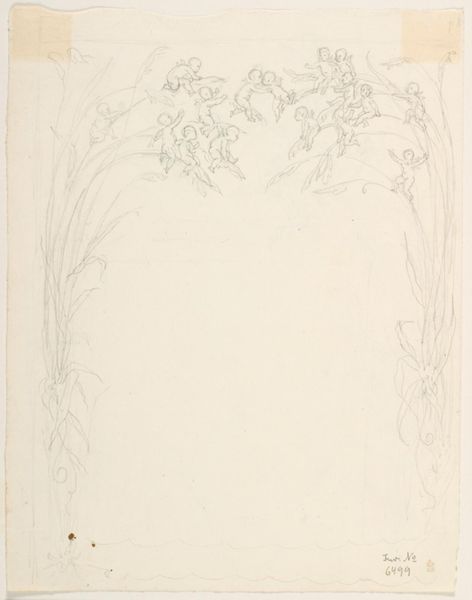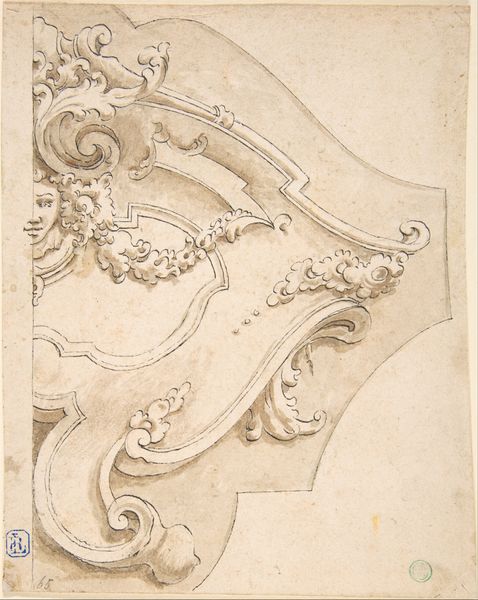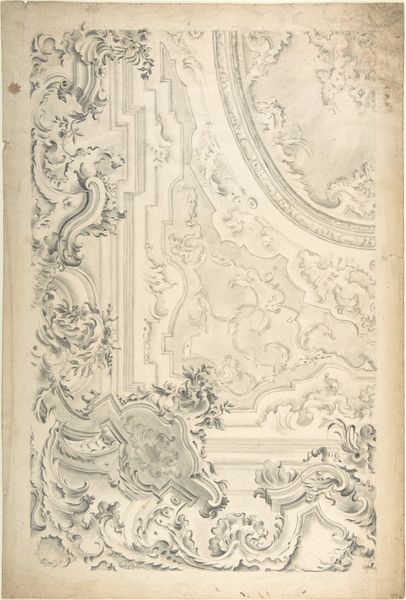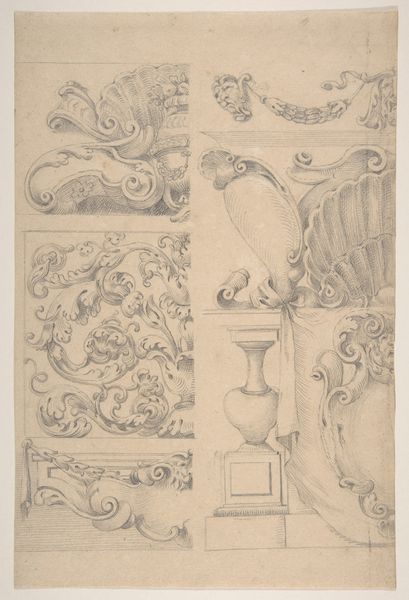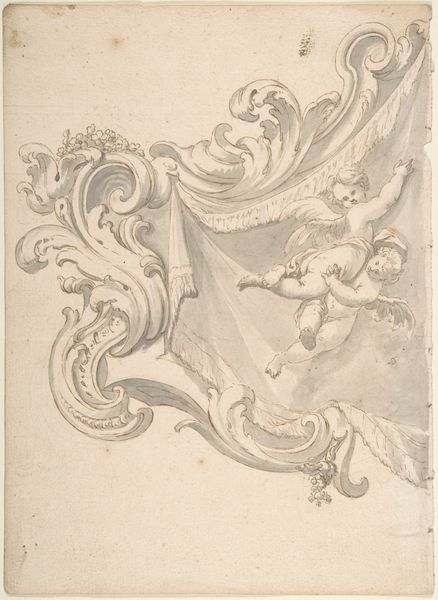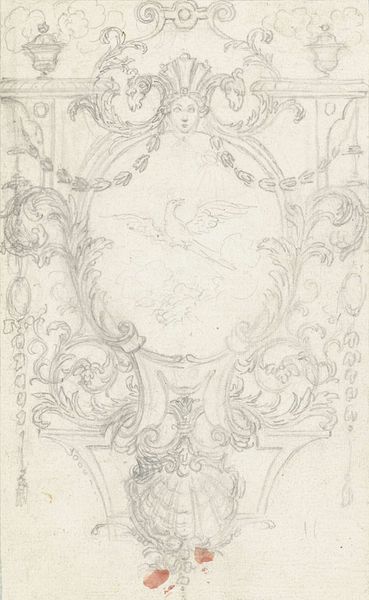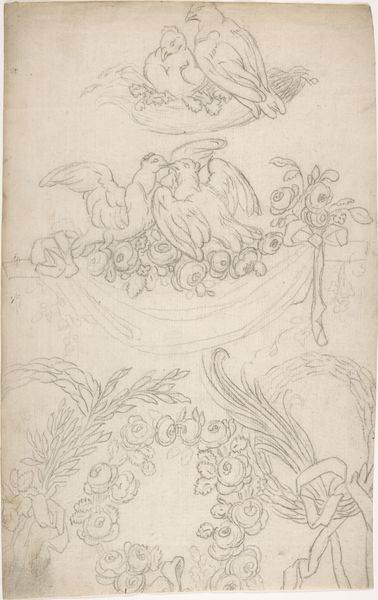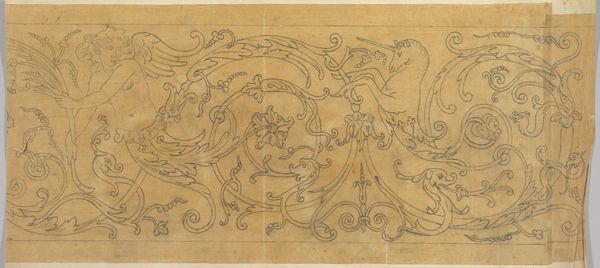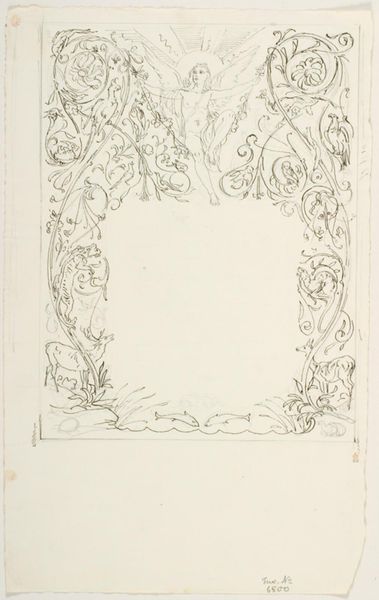
Left Part of the Drawing: Floral Ornaments; Right Part of the Drawing: Half Cartouche Decorated with Leaves, Arms and a Lion 1620 - 1660
0:00
0:00
drawing, ornament, paper, pencil
#
drawing
#
ornament
#
baroque
#
paper
#
geometric
#
pencil
Dimensions: 11-1/2 x 7-5/8 in. (29.2 x 19.4 cm) irregular borders
Copyright: Public Domain
Curator: Agostino Mitelli created this drawing, "Left Part of the Drawing: Floral Ornaments; Right Part of the Drawing: Half Cartouche Decorated with Leaves, Arms and a Lion" sometime between 1620 and 1660. It's currently held at the Metropolitan Museum of Art. What are your first thoughts? Editor: Well, first off, it feels... preparatory? Like a whisper of grander things. It’s all in pencil on paper, lending this lovely ghostliness, you know? As if we’re looking at an idea caught mid-flight. Curator: Precisely! It provides insight into the artistic processes of the Baroque era. Consider how ornament played a role, beyond mere decoration, in signifying power, status, and complex cultural narratives. Mitelli offers us a glimpse into the evolution of visual language. Editor: Absolutely. The lion—a symbol of strength— peeks out rather timidly, nestled amongst those scrolling leaves and the architectural fragment on the right. And, those floral ornaments on the left feel almost… urgent, brimming with potential energy, pushing against their boundaries. I imagine someone about to take up arms for honor, you know. Curator: That sense of urgency ties directly into the function of these kinds of preparatory drawings, serving as models for prints, interior decorations, or even stage designs. Notice how Mitelli renders geometric forms alongside natural motifs— a quintessential aspect of Baroque sensibility, aiming to harmonize opposing elements to achieve grand synthesis. This particular approach reflects the tension of the period, the move between science and religion. Editor: You see tension, and I see exuberance! Imagine these flourishes translated into three dimensions, gilded, bursting forth! There is something wonderful in imagining this. You just want to reach into it somehow. Curator: I agree with the dynamism you mention; it makes me wonder what kinds of social dynamics and inequalities were hidden beneath the ornate surfaces that artists like Mitelli helped to produce. How can these forms serve agendas? Editor: Well, if anything, it inspires me to add some exuberant flourishes to my day—perhaps a ridiculously oversized hat or an unexpected burst of color. Curator: For me, it's about remembering that nothing exists in a vacuum; art is deeply intertwined with historical circumstances, which makes engaging with the works such as these crucial. Editor: A very good point. Yes! Now if you’ll excuse me, I'm off to find that ridiculously large hat.
Comments
No comments
Be the first to comment and join the conversation on the ultimate creative platform.
